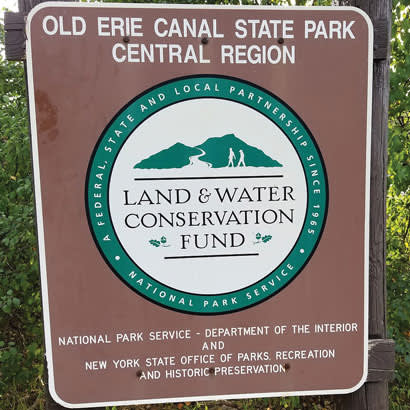
From green space to boat ramps, splashpads, playgrounds and urban gardens the Land and Water Conservation Fund has helped parks departments across the country purchase and improve outdoor recreation space in every congressional district in every state. Now is the time to learn more about the Land and Water Conservation Fund and about some easy steps to ensure that this program continues.
What Is the Land and Water Conservation Fund?
The Land and Water Conservation Fund (LWCF) provides financial resources for federal and local recreation projects from the revenue generated from oil and gas leases on federal land. On the federal side, this money is used for land acquisition and is largely responsible for the expansion of trails, parks and other recreation spaces. The portion of the fund that is most important to NRPA members, however, is the State and Local Assistance Grants, or stateside grants, which have provided $3.6 billion in federal funds to every state, territory and the District of Columbia.
The stateside grants begin with states engaging both their residents and state leaders to determine their outdoor recreation assets and needs, and their priorities and goals for increasing outdoor recreation. Based on these goals, states allocate the money received each year from the federal government to state projects, and funding projects at the local park and recreation level. The allocation that a state receives is based on a formula that uses state population as the largest determining factor.
Deadlines, criteria and selection vary slightly from state to state, but one major requirement for projects is that the funding must be matched at a 1:1 level by local funding.
Within LWCF, there is also a grant program that specifically targets more urban areas. The Outdoor Recreation Legacy Partnership (ORLP), created in 2014, is a fund that is distributed through a nationally competitive program to cities with more than 50,000 people. ORLP grants are larger in size than the standard stateside grants and are designed to go to economically disadvantaged urban areas where opportunities for outdoor recreation are limited, but they also require the local dollar-for-dollar funding match. This program has been successful in connecting underserved communities to nature in our most urban areas.
What Is Happening with LWCF?
LWCF is politically popular, doesn’t use taxpayer money and is distributed to every state in the country, so it appears to be a no-brainer of a program, and, to some extent, it is. In the past several years, the program has seen increased federal appropriations due, in no small part, to the advocacy work of NRPA members. It was authorized in 1964, and, during the more than 50 years of its existence, has received broad bipartisan support. NRPA supports its permanent reauthorization, but, recently, Congress has insisted on more short-term reauthorization bills. Three years ago, Congress passed the current program authorization, but it expires September 30, 2018, the end of this federal fiscal year. While both the House and Senate have made progress toward reauthorization, that deadline will soon be here.
The House of Representatives has a piece of legislation (H.R. 502) that currently has 227 cosponsors, more than half of the House of Representatives. While it’s encouraging that many members support of the LWCF, it hasn’t been given a vote in either the House Natural Resources Committee or before the full House of Representatives.
Compromise legislation, contained in the Energy and Natural Resources Act of 2017 (S. 1460), cleared the Committee on Energy and Natural Resources but hasn’t received time for consideration by the full Senate. The Senate has been toying with the idea of bringing an energy bill to the Senate floor for consideration, and this is a great opportunity to extend LWCF for years to come. While it becomes more challenging to get money for the program from Congress, anyone who relies on LWCF funding can take some comfort in knowing that if its authorization expires, the program does not cease to exist when the authorization expires, come October 1.
What Can You Do?
It is imperative that Congress hear from the users of the LWCF about the importance of this program, specifically of the stateside grants. Public pressure needs to be applied to get the LWCF considered by both the House and Senate. One of the easiest ways to do that is by letting your member of Congress know about the parks in your community that have been funded through the LWCF.
NRPA’s public policy team can work with you to invite those members of Congress to visit your park over the summer. Our Park Champion program makes it easy to invite your local legislators. If you have received funding over the past few years for a park that’s hosting a groundbreaking, ribbon cutting or other event, let us help you bring it to the attention of your members of Congress.
The LWCF ensures that land for recreation will be around for future generations to enjoy. The public policy team looks forward to working with you to ensure its continued success.
Kyle Simpson is NRPA's Senior Government Affairs Manager

